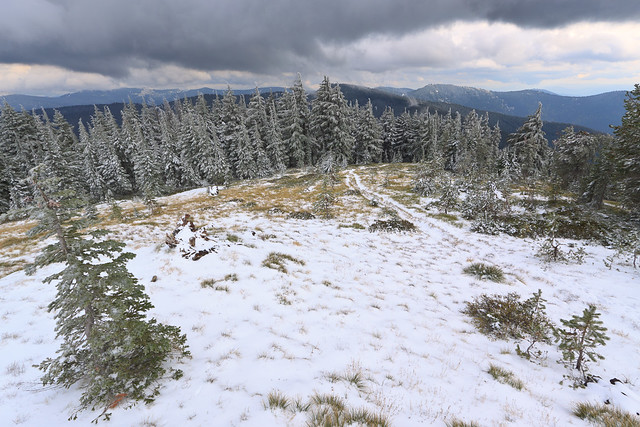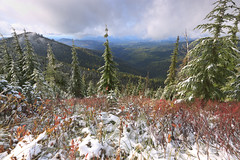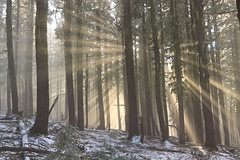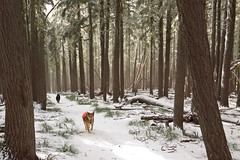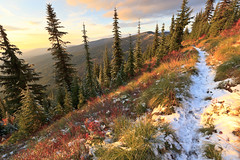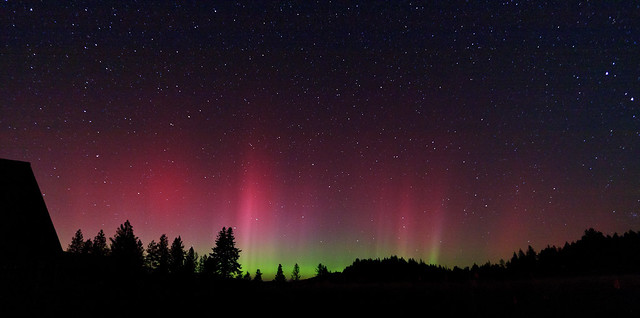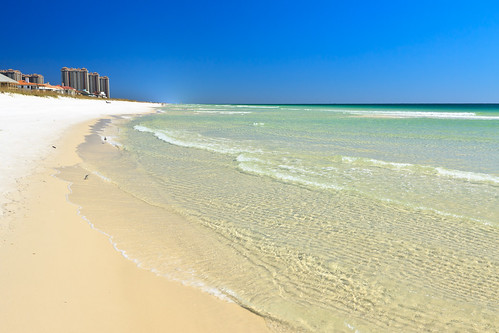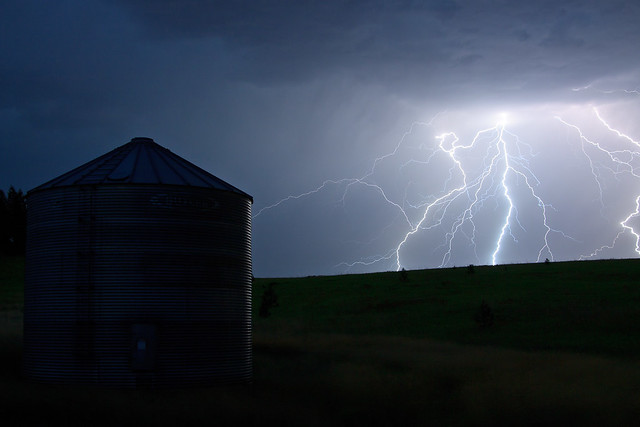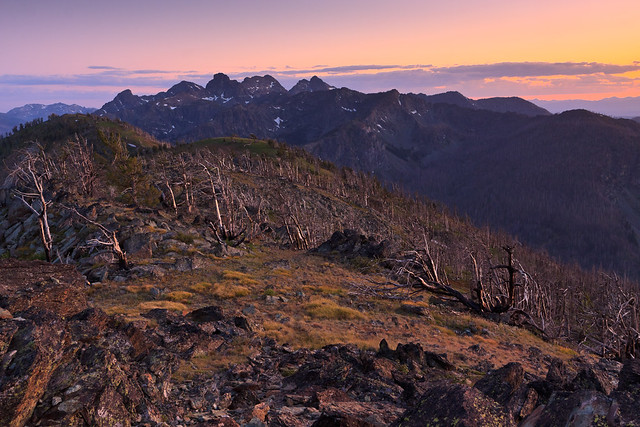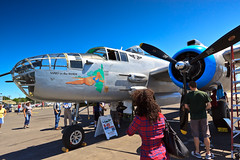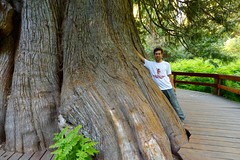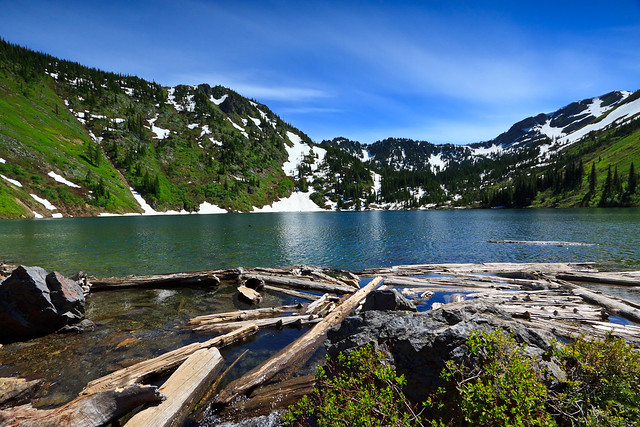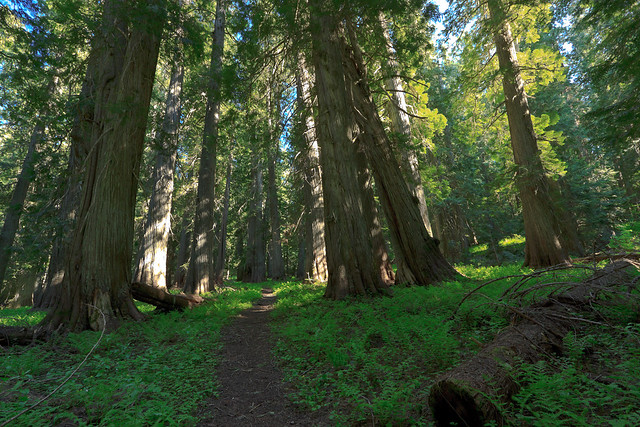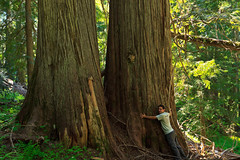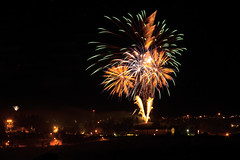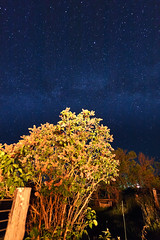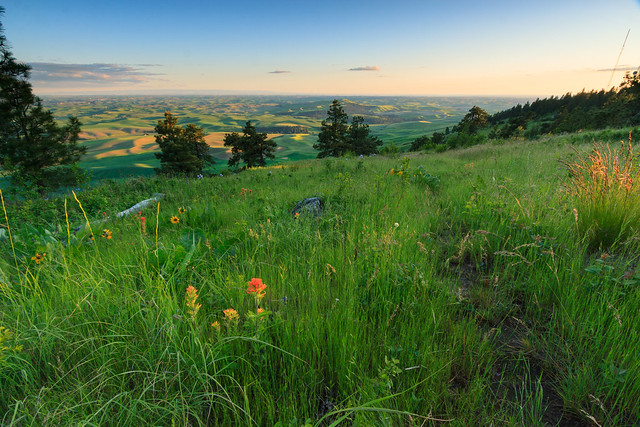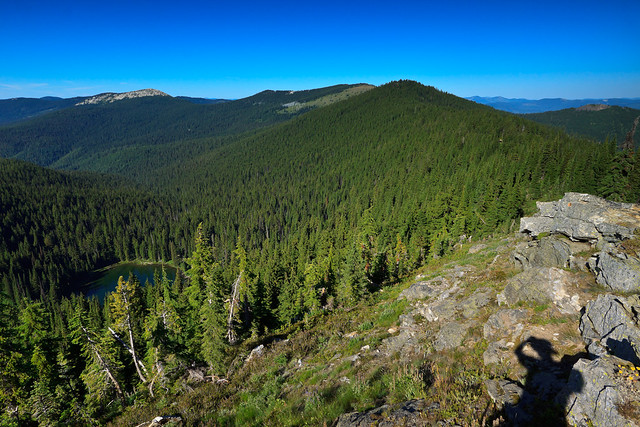
Escaping the Heat at over 6000 feet. This view is from Crater Peak. Below is Crater Lake and Lookout Mountain is the rocky peak in the distance.
While the east coast has contended with an earthquake and a hurricane, we have been enduring our summer heat wave, temperatures in excess of 90 degrees. It rarely gets to 95 out here, but when it does, it’s brutal. Of course, when it’s in the mid-90’s up on the Palouse, it’s over 100 down in Lewiston. Currently, our weather station reads 98 outside and 92 inside.
We don’t have air conditioning. There’s really no need for it. While it’s in the 90’s now, at night, it will cool off below 70, sometimes getting downright chilly. We wake up in the morning and the house is quite comfortable. It’s also only this unbearably hot for maybe 2 weeks out of the year. But this brings up some the question: how do we beat the heat? During the week, the answer is simple. I work in the lab. But I go home as the temperature has crested and the temperatures are still fairly brutal. The house, made of cinder block, holds that heat for a good time into the night, so as the sun sets, it can still be uncomfortable inside while very nice out. It does help keep the house from getting too cold in the middle of the night. So how do I beat the heat? Here are a few ways:
1. Seek Shade.
I know what you’re thinking… What? 98 is 98, and 98 is hot in the shade or not. But here in Idaho, we don’t have the humidity levels seen by much of the eastern half of the country, and while 98 is brutal in the beating sunshine regardless of humidity, it does make all the difference in the shade. It is also the reason why the night cools down so much. Water is very good at holding its temperature, and it takes quite a bit of energy to change it. In Virginia, where the 95 degree day would be accompanied by a balmy 70-90% humidity, the sun heats up that moisture in the air, and that moisture retains the heat well into the night. Because the air is saturated, liquid, such as sweat, doesn’t evaporate as readily and you feel miserable. In contrast, the humidity reading out here is 18%, and with less water in the air to hold that heat, temperatures plummet as the sun goes down. But this also works in the shade too. So, 98 in the shade outside, especially with a nice breeze, is a much different place than 98 in the direct sun.
But 98 is still 98, and dammit, I need to cool off.
2. Cool off in Water
Yesterday, we had our annual Bio Department float trip on the Snake River. I was a bit worried that the 100+ degree temperatures were going to pose health risks being out in the sun all day with no shade. But it turned out to be quite a pleasant ride down the river. I have no idea what the actual water temperature was in the river, but I was so hot in the sun that the initial dip was chilling. But almost immediately, I acclimated and the water felt good – not too hot, and not too cold. I also wore a shirt the whole time, which I kept damp and that helped keep me cool out of the water.
It was good to be on the water again. I haven’t done any river activities since leaving camp last summer, and I miss it, especially since the rivers here have enough flow in late summer to run and still have fun. And the scenery is different. It’s new. The canyon walls are so fun to look at. I think I’ve run the same section of the Shenandoah so many times that I’ve gotten bored with it.
I have no desire to submerge myself in the Snake River again. While it felt good, the water is pretty dirty and gross. After all, it has been flowing from the Tetons, past the cities, farms and cattle feed lots of southern Idaho. I can only imagine how dirty the water gets downstream of Lewiston where we add shipping traffic to the mix. The nearest water sources to home are the Potlatch River at Little Boulder Creek or Elk River. The Potlatch River would be a good place take the dogs to wade in the water. It’s not really deep enough to swim. Elk River has a little swimming hole below the upper falls and might be good to check out, though the water originates high up in the mountains and I hear it’s quite cold.
In Virginia, we would hit up one of the swimming holes on the creeks coming down the Blue Ridge in Shenandoah National Park. While these creeks weren’t fed by snow melt, they did take on ground water throughout their journey to the Shenandoah River, and so the temperature of the streams was probably 50-60 degrees, or quite fidgid. But on a 90+ degree humid day, a dip in the cold water felt refreshing.
3. Head up in elevation.
When summer camp came around, I generally had a 2-week session (7-8th grade, or 9-12th grade) during the hottest weeks. We couldn’t really change our trips around the weather, so we had to make due and work with what we had. Backpacking in the heat is no fun, and backpacking with a bunch of students who don’t usually do this for fun in the heat is no fun. Our philosophy was to teach the kids leadership and responsibility and let them choose and plan their own trip. But I was able to slyly craft my suggestions into their plans. I’d often convince them that a hike in the central district of Shenandoah National Park was the way to go: best views, most attractions, and, most of all, highest elevations. Nearly all of the AT in the central district is above 3500 feet, with high spots reaching 4000 feet. That’s almost 3000 feet higher than camp, and more importantly, at least 10 degrees cooler than camp. So if it was supposed to be 90 in Luray, it would be around 80 up on the trail. Pretty crafty.
Last weekend, it was a brutal 85 here at home in Deary (elevation 2800). So I loaded the dogs into the car and we took a drive up to Freezeout Saddle (elevation ~6000). The car read 71 degrees. It was wonderful. 70 in the sun out here can be quite warm, but when we retreated into the shade of the trees, I thought I might need a jacket. Boy, did it feel good. We actually drove past Freezeout Saddle because I wanted to see what was beyond and maybe even hike out to Lookout Mountain (elevation 6800). The road was quite rocky and slow, but nothing the Subaru couldn’t handle. It did take me an extra hour to go the extra 11 miles (I think it was 11), and when I got to the trailhead at 4, I figured it was too late to start an 8-mile hike. There are some nice facilities up there. At Crater Peak, there is a picnic and camping area, and another couple of sites just down the road at Crater Saddle. And at the trailhead to Lookout Mountain, there is another little campground. All of these are primitive, but they come with picnic tables and fire rings and a relatively new pit toilet. Instead of hiking, we kept driving on FS 301 taking it all the way to Avery and the St. Joe River. We came home on the paved road via St. Maries. The point is, if you can go up in elevation, do it. With today’s 95 degree temperatures, it’ll probably be 80 up at the saddle.
So here I am, trying to decide how I want to cool off. Do I go swimming, or do I head up to higher elevations? Both require me to get into the hot car and waste gas. And here’s the other caveat, by the time I get anywhere, the sun may have fallen enough to provide me with the evening refuge. Maybe today I’ll just endure the heat and wait it out for sunset. Indecision sucks.
The heat wave is supposed to break in a couple of days, and we’ll be looking at much cooler temperatures for next weekend’s backpacking trip in the Eagle Cap Wilderness.

